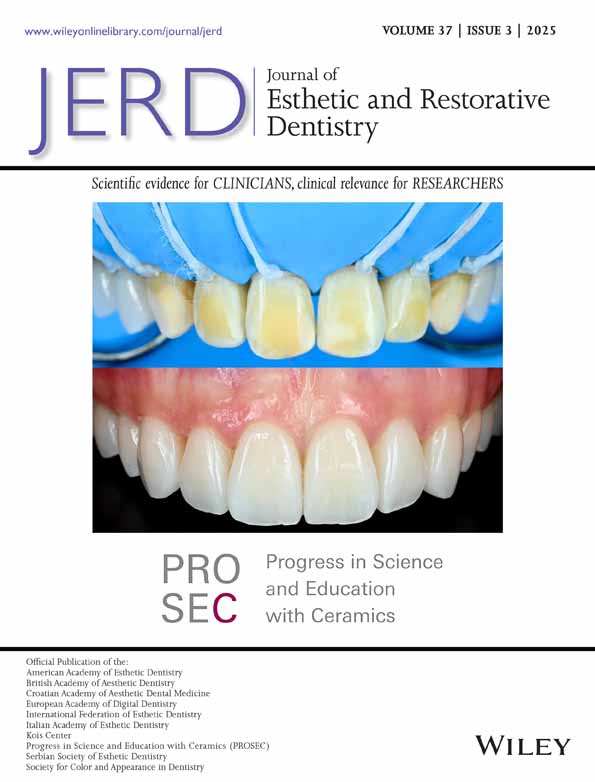Rehabilitation of the Worn Dentition With Direct and Indirect Minimally Invasive Concepts—A Systematic Review and Meta-Analysis
Funding: This work was supported by Swiss Society of Reconstructive Dentistry SSRD, Clinic for Reconstructive Dentistry, Center of Dental Medicine, University of Zurich.
ABSTRACT
Objective
To report and compare the survival of minimally invasive direct and indirect restorations of different materials for restoring the worn dentition.
Material and Methods
A systematic search was conducted in six databases: MEDLINE, Web of Science, Scopus, CENTRAL, VHL, and EMBASE. The eligibility criteria of this systematic review used the PICO framework to address the following research question: “In dentate patients with a worn dentition (P), does rehabilitating their lost tooth structure with indirect restorations (I) or direct (C) effect the survival and success of treatment (O)?”. Study characteristics, survival rates of the restorations were extracted from each article. No language restrictions were applied. Survival and prevalence estimates were calculated using random-effect models.
Results
The electronic search yielded 5009 entries, resulting in 14 publications selected for full-text analysis. These included 2 RCTs, 7 prospective, and 5 retrospective studies, with a varying level of methodological quality. This included 52% direct and 48% indirect restorations, using varying materials and follow-up periods. The survival of direct composite resin restorations versus indirect manually processed composite resin restorations showed no significant difference (n = 2; OR, 1.79 [95% CI, 0.64–5.05]; p = 0.270). For the prospective articles, the pooled prevalence estimates of the survival restorations were; direct (n = 3; 99% [95% CI, 0.97–1.00]) and; indirect (n = 5; 100% [95% CI, 0.99–1.00]). Lithium disilicate recorded the least amount of failures at 1.8%.
Conclusions
Although the survival estimates of indirect manually processed and direct composite resins were not significantly different, indirect restorations—especially those made of lithium disilicate ceramic—may offer better survival rates, compared to direct resin restorations in patients with worn dentition.
Clinical Significance
Despite the limited evidence, indirect ceramic restorations appear to be well-suited for long-term treatment of worn dentition, whilst direct composite resin restorations are more suited as an medium-term solution.
Conflicts of Interest
The authors declare no conflicts of interest.
Open Research
Data Availability Statement
The data that support the findings of this study are available from the corresponding author upon reasonable request.




